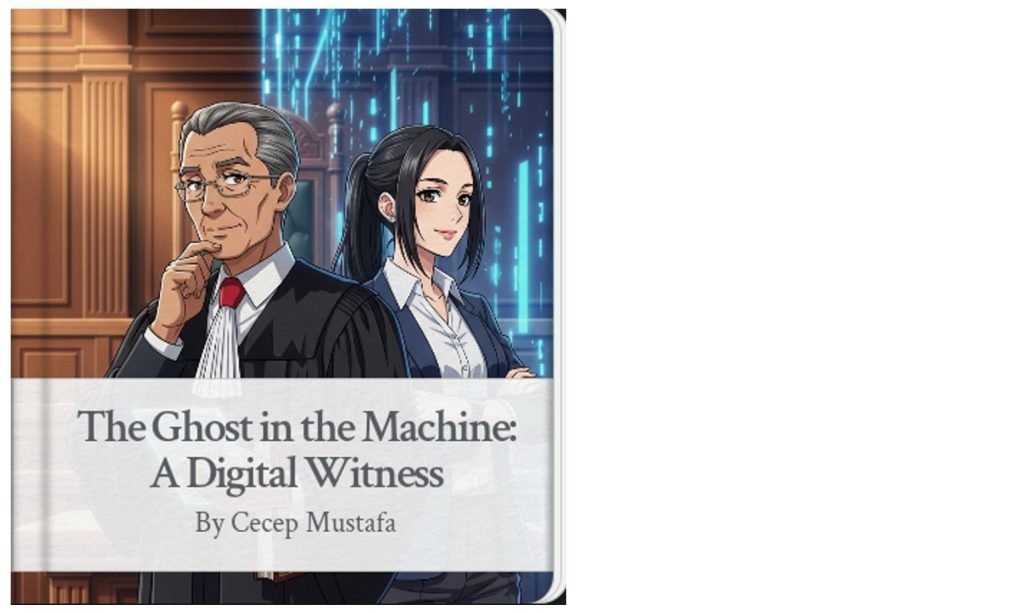JHP Journal Editor’s Note
By Cecep Mustafa
Indonesia’s Digital Shadows and the Law’s Long Memory
Every click, every scroll, every “I agree” is a confession of sorts. In this century of constant connection, we live trailed by invisible witnesses—our data. These fragments of code, once inert and meaningless, have become the modern archive of human behavior. They remember what we forget. They expose what we conceal.
For the law—especially in Indonesia, whose legal bones were built in the analog age—this is a haunting development. Courts once weighed truth in kilograms: stamped paper, handwritten signatures, the steady voice of a witness in a wooden chair. Now, the evidence appears as a flicker on a screen. The courtroom, once a theater of oaths and documents, finds itself confronting ghosts—digital traces that never sleep and seldom lie in predictable ways.
The question, then, is not just how to admit this new evidence, but how to believe it.
From Paper to Pixels: When Proof Had Weight
Before the cloud, truth was heavy. Indonesia’s Criminal Procedure Code (KUHAP) reflects a world where proof had form and texture: the sworn testimony, the stamped report, the ink that smudged your fingers. Article 183 guards against rash convictions, insisting on a minimum of two valid pieces of evidence—what jurists call the asas batas minimum pembuktian. Justice, after all, was never meant to rest on whispers.
Article 184 then names the five sacred pillars of proof: witnesses, experts, letters, clues, and the words of the accused. It was a world that trusted handwriting more than hard drives. The “Surat”—the document—was revered, its physicality seen as virtue itself. Paper didn’t vanish when you closed a browser tab.
But data has no weight. It can be copied infinitely, altered invisibly, deleted irreversibly. The letter became an email. The oath became a checkbox. The signature became a pixel.
And so, the question arises: can something intangible still carry the moral gravity of proof?
The Law Meets the Ghost: Indonesia’s ITE Awakening
In 2008, Indonesia passed the Information and Electronic Transactions Law (UU ITE), a legislative bridge between the tactile past and the digital now. It was the law’s first acknowledgment that ghosts could speak—that emails, chats, and files could, under the right light, bear witness.
Article 5 was revolutionary in its simplicity: electronic information and documents are valid legal evidence.
It sounds mundane today, but philosophically, it was a tectonic shift. The law was learning to see through screens. Yet, as with all awakenings, the early steps were uncertain. It was one thing to recognize the existence of digital evidence; it was another to trust it.
Because pixels can lie.
The Judge and the Pixel: The New Burden of Belief
Judges are trained to read people, not code. They know the weight of hesitation in a witness’s tone, the tremor in a forged signature. But what does one do with a screenshot? With metadata that claims to record an act but may have been altered a thousand times over?
The ITE Law tried to answer this with a quiet rigor: electronic evidence must be retrievable, authentic, secure, and managed by a verifiable process. In essence, it asked judges to become philosophers of trust—guardians not only of truth, but of its conditions.
Here lies the heart of the digital dilemma: we can no longer simply see authenticity; we must prove it scientifically.
Digital Forensics: Giving the Ghost a Voice
Enter the quiet heroes of this new age—the digital forensic experts. Their work is part detective craft, part metaphysics. They preserve, clone, and verify data with monastic precision. A single misplaced click could alter an entire narrative.
Their three sacred steps—write protect, forensic imaging, and verification—form the ritual that resurrects data from the digital ether and makes it admissible before the law. A cryptographic “hash value,” that odd mathematical fingerprint, becomes the new seal of truth.
But even here, the ghost remains restless. The best forensic tools are powerless without the steady hand of certified expertise. A machine cannot testify to justice; only a human can interpret its whispers.
Toward Legal Enlightenment in a Digital World
What, then, must Indonesia’s judiciary do to keep pace with its ghosts?
First, to institutionalize digital literacy within the judiciary—training judges and prosecutors not to fear the technical, but to read it with discernment. Second, to standardize forensic procedures and certification so that every byte of evidence rests upon a verified chain of trust. Third, to reimagine the courtroom as both legal and technological space, where truth is mediated through expertise as much as through argument.
Ultimately, the law must evolve not just in form, but in spirit. Justice in the digital age requires humility before complexity, and wisdom before code. For if truth is now written in data, then the quest for justice is no longer about chasing the ghost— it is about learning to listen to it.



